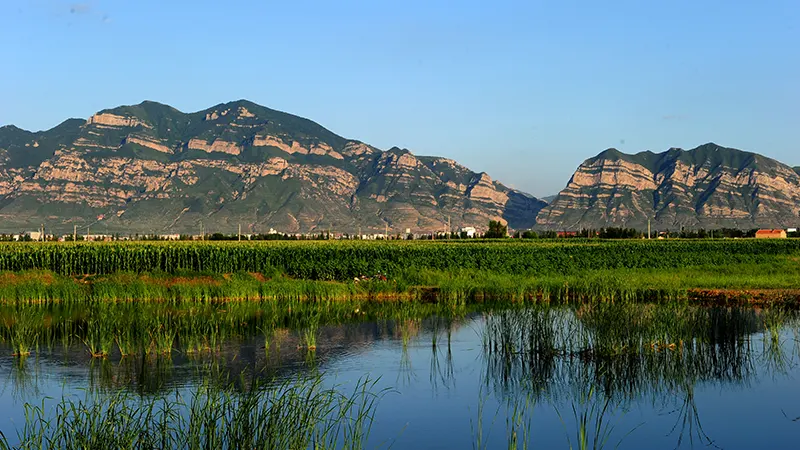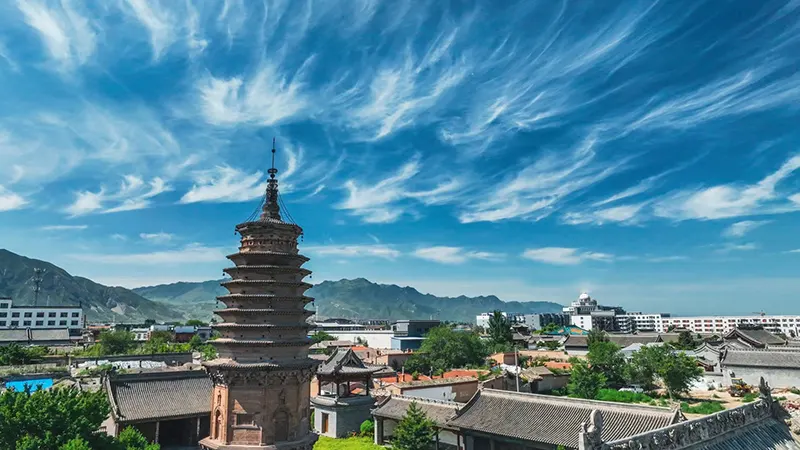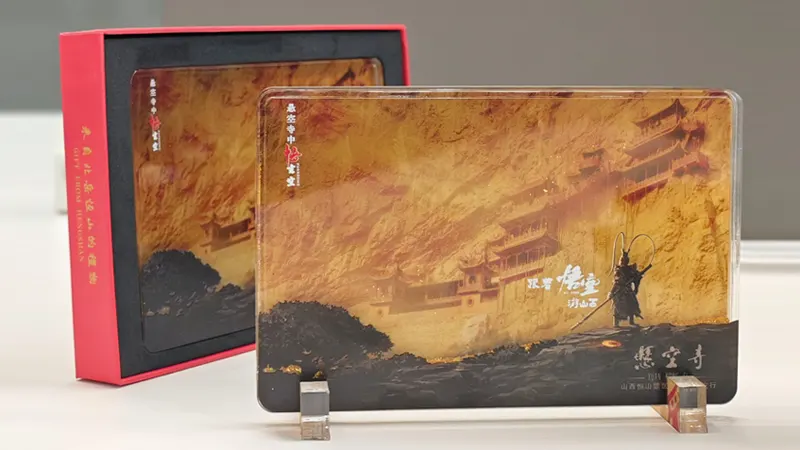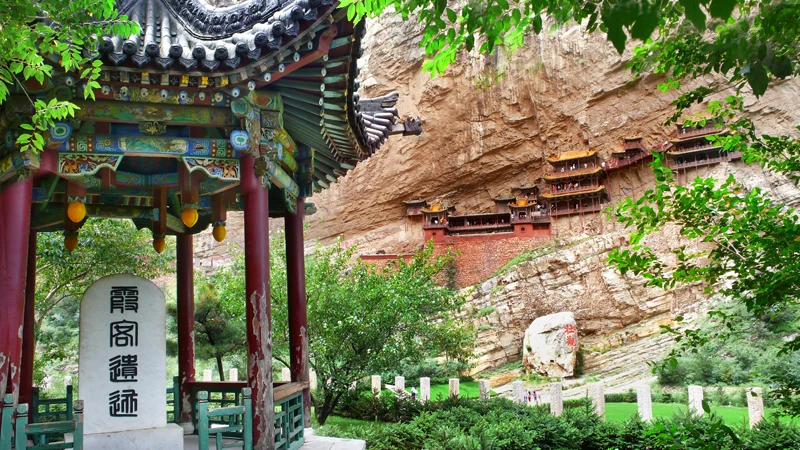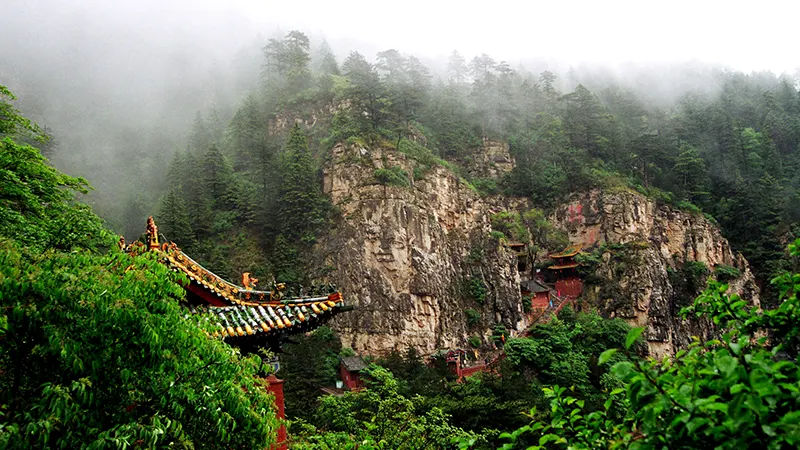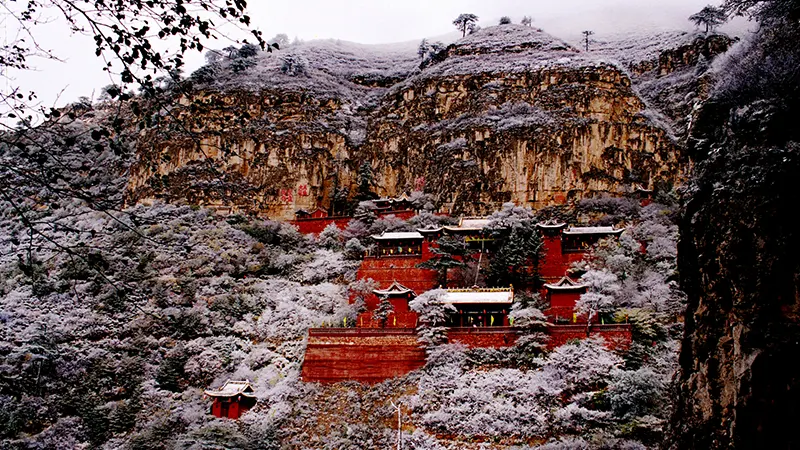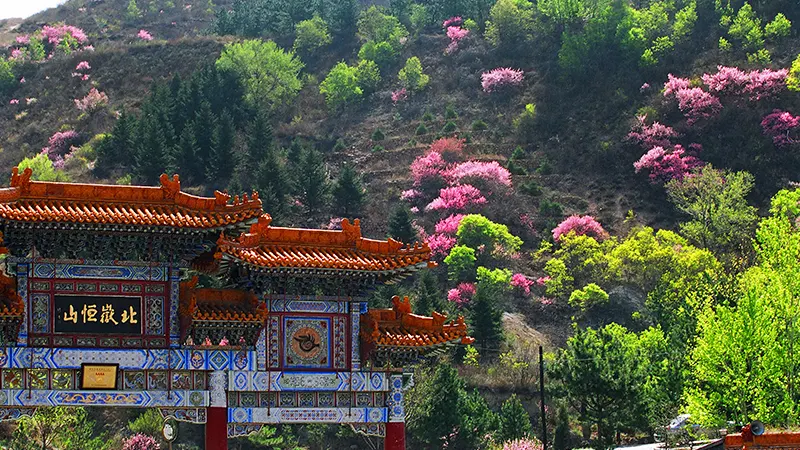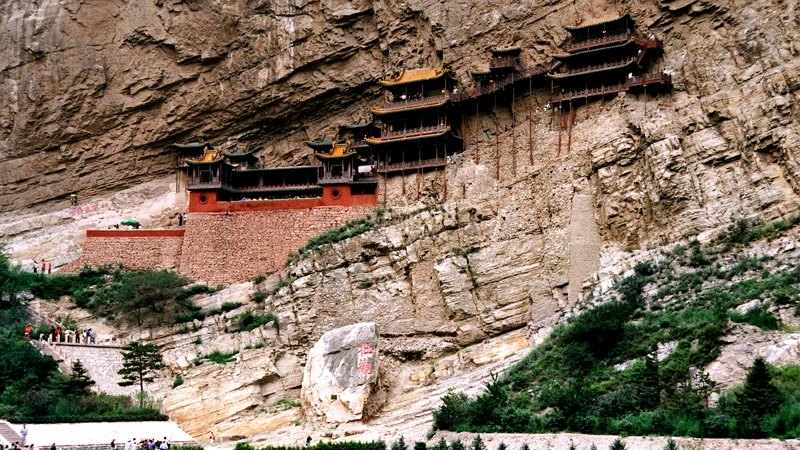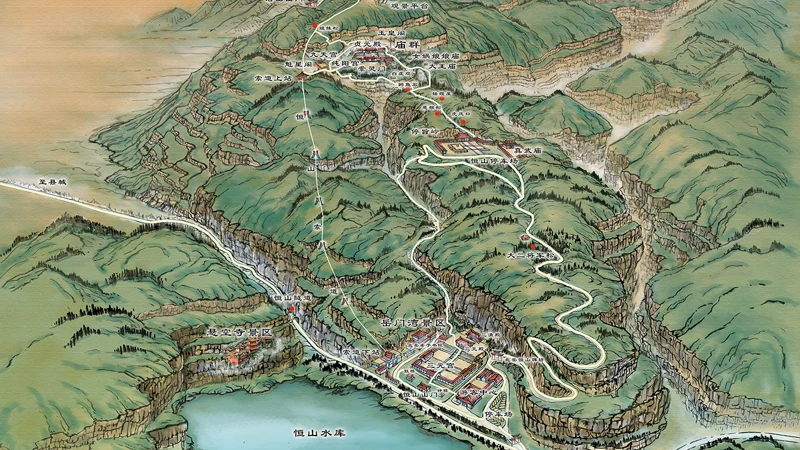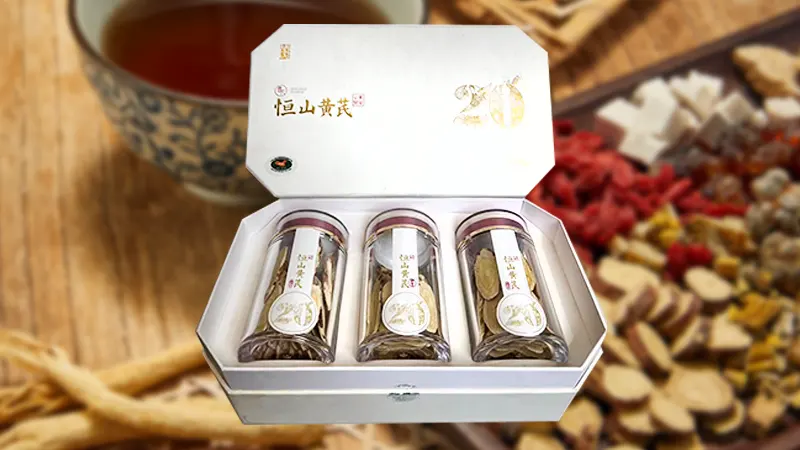Yang Xinru | Sun Cong: The Person and His Story
Publish Time:
2025-06-16 11:37
Source:
Within the Shenxi National Wetland Park in Hunyuan County, Shanxi Province, lies Fengshan Academy, established during the Ming Dynasty. The founder was Sun Cong, a native of Hunyuan and a Ming Dynasty official in the Ministry of Rites. Who was Sun Cong? Let me explain.
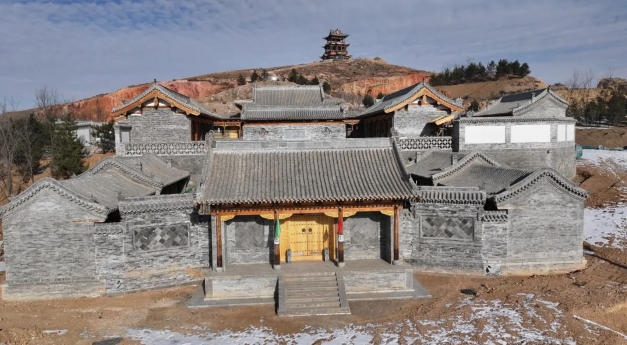
▲Fengshan Academy
The Past and Present of Fengshan Academy
Academies were a unique educational institution in ancient China. They emerged during the Tang and Five Dynasties periods, flourished during the Song, continued during the Yuan, became widespread during the Ming and Qing, and were reformed into modern schools at the end of the Qing Dynasty, spanning over 1000 years.
Towards the end of the Five Dynasties and Ten Kingdoms period, with the application of iron farming tools, large-scale land management, and improvements in planting techniques, this new educational and cultural institution emerged, known as the academy, such as Songyang Academy and Yingtian Academy. Initially, academies were institutions for proofreading woodblock-printed books; later, they developed further. During the Tang Dynasty, academies became official institutions for the preservation and compilation of books. In the thirteenth year of Kaiyuan (725), Emperor Xuanzong renamed the Lizheng Academy to Jixian Academy. The academy's collection once reached 80,000 to 90,000 volumes, emphasizing book collection, compilation, and lectures, functioning as a royal library. During the late Tang and Five Dynasties periods, frequent wars led scholars to retreat to the mountains or countryside to teach, and academies began to function as places for teaching and instructing students, such as Bailudong Academy and Yingtianfu Academy. However, at this time, the number and scale of academies were limited, and their influence was small. During the Northern Song Dynasty, with the stabilization of the regime, academies began to flourish. In the early Song Dynasty, formal schools were not yet established. Due to the expansion of the imperial examination system, official schools were in decline. To cultivate Confucian scholars, the court supported and encouraged private education. Combined with the influence of Buddhist monasteries and the application of Bi Sheng's movable type printing, the conditions for the rise of academies were formed. The father and son Liu Xiang and Liu Xin of the Western Han Dynasty had already completed most of the Confucian annotation studies, which had been passed down. The Song Dynasty needed to change Confucianism from annotation studies to studies of principles. Therefore, in scenic areas, Confucian scholars of the Northern Song Dynasty established academies, gathering Confucian scholars to discuss the principles of Confucianism. In this way, academies truly fulfilled their educational function. Great Confucian scholars such as Lü Zuqian, Hu Anguo and his son, Zhang Shi, Zhu Xi, the Cheng brothers, and Lu Jiuyuan, spearheaded the development of academies, teaching and spreading Confucianism. Yingtianfu, Yuelu, Bailudong, and Songyang, the four major academies, led the trend. "To establish a heart for the world, to establish a life for the people, to continue the learning of the past sages, and to bring peace to the world," expressed the aspirations of ancient Chinese intellectuals, a timeless masterpiece passed down through generations, and called "the four sentences of Hengqu" by the contemporary philosopher Feng Youlan. This was proposed by Zhang Zai, a great Confucian scholar of the Northern Song Dynasty who lectured at Chongshou Academy (Hengqu Academy). Therefore, the Song Dynasty was an important stage and key period for the formation and improvement of the academy system, which played an important role in the development of culture and education during the Song Dynasty. It can also be said that monasteries were the academies of Buddhism, and academies were the temples of Confucianism. During the Southern Song Dynasty, academies continued to develop. There were 515 academies in the Song Dynasty, of which 73 were confirmed to be from the Northern Song Dynasty, 317 from the Southern Song Dynasty, and 125 could not be distinguished between the Northern and Southern Song Dynasties, and could only be generally referred to as Song Dynasty academies. During the Yuan Dynasty, academies continued the Song system and opened up new horizons, connecting both official and civilian paths, leading the literary tradition from the south to the north. During the Zhengde and Jiajing years of the Ming Dynasty, Wang Yangming and Zhan Ruoshui's theories, using Neo-Confucianism as a tool, infused the reading community with a spirit of freedom. During the Qing Dynasty, academies presented a unique shift in reading culture with "popularization and innovation," with over 4,000 academies spread throughout the country.
Under the atmosphere of national academy development, the culturally rich ancient county of Hunyuan did not stand idly by but also took the opportunity to establish numerous academies, most notably during the Jin, Yuan, Ming, and Qing dynasties. Four academies were particularly famous: Cui Ping Academy, Shixi Academy, Fengshan Academy, and Henglu Academy. Cui Ping Academy was founded during the Jin and Yuan dynasties, located 2 kilometers south of Hunyuan Prefecture, on the hillside of Cui Ping Mountain. Its original site now houses the Sanqing Taoist Temple. Liu Yi, the top scholar of the Jin Dynasty, and Su Baoheng, the right prime minister, once studied and lectured there. Shixi Academy was founded during the Ming Dynasty, located in the northern suburbs of Hunyuan County, established by Shi Jie, a Ming Dynasty governor. Fengshan Academy was founded during the Ming Dynasty, located 1 kilometer north of Hunyuan County, by the Shenxi wetland and under Phoenix Mountain, adjacent to the famous water god temple, Lü Lü Shenci. It was funded by Sun Cong, a Ming Dynasty official in the Ministry of Rites. Henglu Academy was founded in the nineteenth year of Qianlong's reign in the Qing Dynasty, located 100 meters east of the county's Confucian Temple. It was proposed by Liu Yuyan, the prefect of Datong, and Long Yunfei, the governor of Hunyuan Prefecture, and finally completed by Gui Jingshun, the magistrate of Hunyuan. For many years afterward, many famous scholars were invited to lecture there. During the Guangxu reign of the Qing Dynasty, Henglu Academy and many other academies were replaced by modern schools.

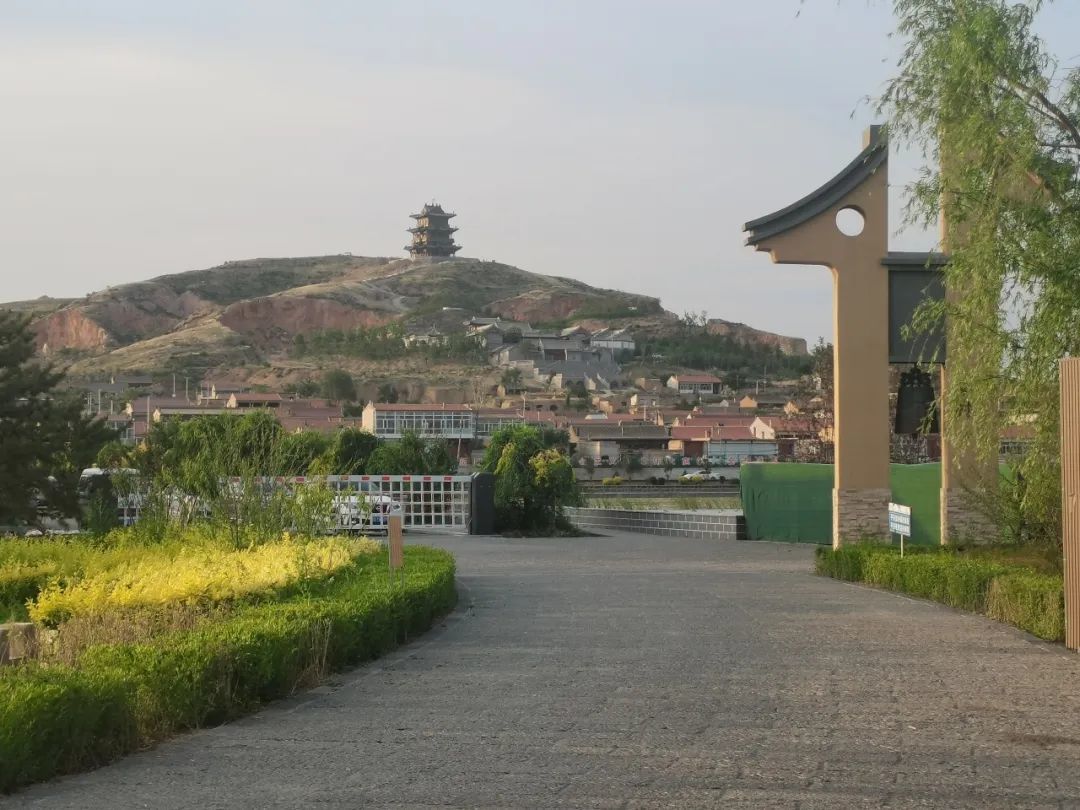
▲Fengming Tower adjacent to Fengshan Academy
Sun Cong's Family Background and Identity
According to the Hunyuan County Annals: Sun Cong was from Hunyuan Prefecture, Datong Prefecture, Shanxi. He was appointed a scribe during the Chenghua era and served as an official in the Ministry of Rites during the Hongzhi era of the Ming Dynasty. After retiring, he settled in Shenxi Village, Hunyuan, and later founded Fengshan Academy.
Sun Cong was the son of an official, from a prominent family. His father, Sun Fengji, courtesy name Yuqing, was from Hunyuan Prefecture, Datong Prefecture, Shanxi Province. He lived approximately from the Yongle era (1403-1424) to the Chenghua era (1465-1487) of the Ming Dynasty. In Dongzheng Village, Luyang Town, Rucheng County, Chenzhou City, Hunan Province, there is a Sun family ancestral hall (Dongzheng Sun Clan Imperial Censorate Residence), which is the ancestral hall of Sun Fengji's family, a Ming Dynasty censor. However, this Sun may not be that Sun; they are two different people with the same name. Sun Cong's father, Sun Fengji, was a juren (provincial graduate) in the Dingmao year (the twelfth year of Zhengtong, 1447) of the reign of Emperor Yingzong of the Ming Dynasty. According to the ancient imperial examination system, he was appointed magistrate of Chang'an County (present-day Chang'an, Shaanxi). After taking office, he implemented policies to promote good deeds and punish bullies, improving the local social atmosphere. Therefore, he gained a good reputation in the Shaanxi region. After further investigation of Sun Fengji's achievements, he was promoted to the position of censor and sent to inspect the salt fields in Changlu (present-day Cangzhou, Hebei). Later, he was sent to Yulin (present-day Yulin, Shaanxi) to supervise the military. Wherever he went, Sun Fengji strictly enforced discipline, resulting in a clean and orderly environment. Later, he was appointed to inspect Sichuan. At that time, ethnic minorities along the Yangtze River in Sichuan had serious internal conflicts due to interests, but the local garrison and governors did not take it seriously, neither managing nor reporting it, leading to huge losses of life and property for both sides. Sun Fengji reported to the court and severely punished these negligent officials. He organized local people to fight drought and disaster, and prevent and control diseases. The people of Sichuan were very grateful and passed down a folk song: "Gentle spring breeze and fine rain, Sun Fengji from Shanxi." Subsequently, Sun Fengji was promoted to the position of Assistant Censor of the Shaanxi Provincial Censorate, and soon after, to the Deputy Censor (equivalent to a vice-provincial-level leader in charge of political and legal affairs), responsible for "correcting evil officials, suppressing villains, settling lawsuits, redressing grievances, promoting discipline, and clarifying governance." (Ming History, Hundred Officials Biography) During his tenure, he repeatedly overturned unjust cases, and the people were very supportive. After being stationed in Guyuan (present-day Guyuan, Ningxia), he was skilled in governance, diligent in his work, and achieved remarkable results, earning the respect of local gentry and people. He was then promoted to the Right Chief Financial Commissioner of Shaanxi Province, and then to the Left Chief Financial Commissioner. He soon resigned due to illness. Some materials say that he was dismissed from office due to "old age and incompetence." However, I believe that he may have been disgusted with the abuse of power by Liu Jin and others, and deliberately resigned due to illness. Sun Fengji lived at home for five years and died on the eleventh day of the fourth month of the fifth year of Hongzhi (1492) at the age of seventy. His tomb is located near Guce Village, two li northeast of Hunyuan City. In the same year, Wang Yangming, one of the "two and a half sages" in Chinese history, was twenty years old and easily passed the Zhejiang provincial examination. In the Shaanxi Province of the Ming Dynasty, Sun Fengji was the Chief Financial Commissioner with the longest tenure, and his name was remembered by the people of Guanzhong. Finally, he was approved to be included in the Temple of Famous Officials. Sun Fengji had two wives: his original wife, Du, was the daughter of Du Jingsheng, a scholar from Hunyuan County, and was granted the title of Ru Ren (a title for the wife of an official) for her virtue; his concubine, Zhang, was Sun Cong's mother.
Sun Cong's younger brother, Sun Ming, was a juren in the Dingmao year (1507) of the reign of Emperor Wuzong of the Ming Dynasty. Sun Cong's grandfather, Sun Shu, was granted the title of Wenlin Lang and Guangxi Dao Censor due to Sun Fengji's prominence. Sun Cong's great-grandfather, Sun Zhen, is also recorded in the "Hunyuan Prefecture Annals (Qianlong Edition), Filial Piety and Righteousness": "Sun Zhen, was filial. When his father was ill, he prayed to heaven to take his place; when his mother was ill, he cut off his own flesh to feed her, both times resulting in recovery. Zhen's grandson, Sun Fengji, became a Chief Financial Commissioner." Influenced by the family's tradition, Sun Cong must have been a loyal and righteous person.
Sun Cong held multiple positions. Ming Veritable Records In the "Veritable Records of Emperor Xianzong (Chenghua)" (Volume 257), it is recorded: "Sun Cong, a Confucian scholar in official attire, served as a clerk in the Zhongshu Ke (the Secretariat)." First, let's talk about Sun Cong's identity as a "Confucian scholar in official attire". Ming History records: "Students who repeatedly failed the examinations, over fifty years old, and wished to retire, were given official attire and their status was restored." For example, in the sixteenth year of Jiajing (1537), "the emperor decreed that scholars who had repeatedly failed the examinations and were over fifty years old should be given official attire to honor them." "Confucian scholar in official attire" was a political treatment for those who repeatedly failed the examinations and were over fifty years old and wished to retire. Such scholars could retain their official attire and exemption for life. The "Jiajing Weishi County Annals" states: "Confucian scholars in official attire, those who failed the imperial examinations, were given official attire. This is a tradition of our dynasty to value scholars. Wearing official attire, they are respected and honored. Gentlemen should only strive to live up to their attire." This shows the honor of the status of Confucian scholars in official attire and their high social status in Ming Dynasty society. For example, "those who had been paying grain taxes for many years and had not been promoted were allowed to retire and receive official attire. Those who passed the imperial examinations but did not want to take office were given a Confucian official title by the provincial examination authority and exempted from miscellaneous duties." Therefore, after being granted a Confucian official title, they became part of the feudal ruling class and enjoyed the privilege of exemption from miscellaneous duties. As part of the lower feudal class, Confucian officials enjoyed a certain reputation in local society and played a unique role. This also shows that although Sun Cong did not eventually pass the imperial examinations, he possessed the honorary title of "Confucian scholar in official attire," which distinguished him from ordinary scholars. His learning was recognized by the court, and he held a certain political status in society.
Secondly, let's talk about Sun Cong's identity as a Zhongshu official. Sun Cong was appointed to the Zhongshu Ke during the Chenghua era. The "Ming History" (Volume 72) records: "Previously, the Taizu Emperor, following the previous system, established the Zhongshu Province, with left and right prime ministers, rank one... In the Jiachen year, October, the Metropolitan Procuratorate was subordinated to the Metropolitan Military Commission. In the Wu Yuan year, the Censorate was abolished. In the first year of Hongwu, the Examination Office was abolished. In the second year, the offices of clerks, inspectors, and judges were abolished. In the seventh year, ten provincial clerks were established, and later changed to Zhongshu clerks." From the above information, after the Hu Weiyong case in the thirteenth year of Hongwu (1380), Emperor Zhu Yuanzhang abolished the Zhongshu Province and the position of prime minister, transferring the power of the Zhongshu Province to the six ministries and personally taking charge of government affairs. The original officials of the Zhongshu Province were all dismissed, and only the Zhongshu Ke was retained within the cabinet, with only Zhongshu clerks remaining, whose rank was Rank 7 This is incomparable to previous generations. According to relevant materials, the Zhongshu Sheng (Ministry of State Affairs) was mainly responsible for drafting imperial edicts in accordance with the emperor's instructions, with the drafting responsibility primarily borne by the Zhongshu She Ren (Secretaries of the Ministry of State Affairs). Located within the palace, the Zhongshu Sheng also had the responsibility of remonstrance. Therefore, Sun Cong was appointed to the Zhongshu Sheng during the Chenghua era, with his highest rank being a rank 7 Zhongshu She Ren. Sun Cong, a Confucian scholar, working in the Zhongshu Ke (Ministry of State Affairs office) meant he participated in handling important government documents. This position not only required a certain level of cultural literacy and writing skills but also access to state secrets and core government affairs. From this perspective, Sun Cong's position allowed him to influence government decisions and administrative processes. If he was indeed a close associate of Liu Jin, Liu Jin might have used his convenience in the Zhongshu Ke to manipulate the drafting and issuance of documents, thus achieving his goal of wielding power.
Next, let's discuss Sun Cong's identity as a Libu Siwu (Ministry of Rites official). The Ministry of Rites was a product of the Three Departments and Six Ministries system established in ancient China. Three Departments and Six Ministries system Established in the Sui Dynasty. Among them, the Shangshu Sheng (Ministry of Personnel) originated in the Eastern Han Dynasty (then called Shangshu Tai); the Zhongshu Sheng (Ministry of State Affairs) and Menxia Sheng (Ministry of the Secretariat) were formed during the Three Kingdoms period, aiming to divide and limit the power of the Shangshu Sheng. It was only in the Sui Dynasty that they were unified into the Three Departments and Six Ministries. During its development, the organizational structure and power of the three departments evolved, while the six ministries system remained largely unchanged until the end of the Qing Dynasty. The three departments refer to the Zhongshu Sheng, Menxia Sheng, and Shangshu Sheng, while the six ministries refer to the Libu (Ministry of Personnel), Hubu (Ministry of Revenue), Libu (Ministry of Rites), Bingbu (Ministry of War), Xingbu (Ministry of Justice), and Gongbu (Ministry of Works) under the Shangshu Sheng. Each ministry had four departments, totaling twenty-four departments. The Ministry of Rites was in charge of state ceremonies, education, and the imperial examination system. Officials included the Shangshu (Minister) and Shilang (Vice-Minister), with departments such as the Yizhi Si (Department of Ceremonies), Ciji Si (Department of Sacrifices), Jingshan Si (Department of Imperial Cuisine), and Zhuyin Ju (Bureau of Seals). The Ministry of Rites had a Siwu Ting (Office of Administration), with two Siwu (administrative officials) of rank 9. The Libu Siwu was responsible for managing the internal affairs of the Ministry of Rites, such as receiving and sending documents, registering archives, and arranging ceremonial activities.
Was Sun Cong Liu Jin's brother-in-law or nephew? The records in "Ming Shi (History of Ming)" and "Guo Chao Dian Gu Juan Zhi Yi Bai Ba Hou Jian Lu (Records of the National Dynasty)" contradict each other, but I believe the "brother-in-law" account in "Ming Shi" should be considered accurate, as "Ming Shi" is the official national history and holds greater authority.

▲ Dusk settles over Shenxi Wetland
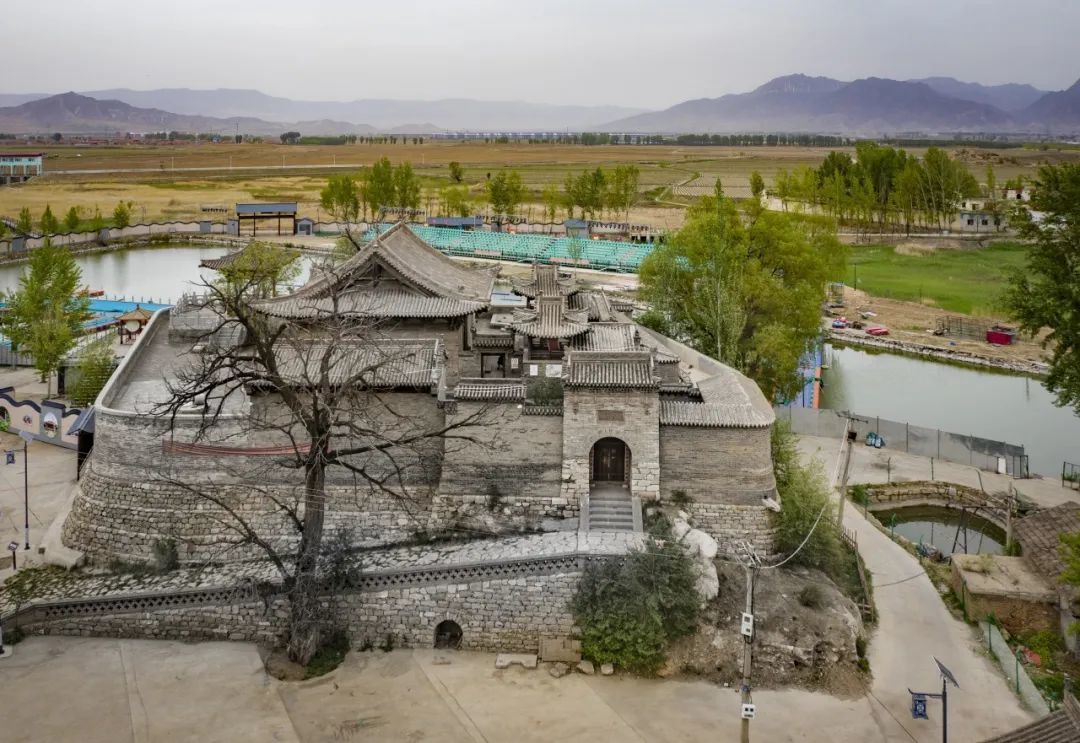
▲ National Key Cultural Relic Protection Unit - Lü Lǜ Shen Ci (Temple of Lü Lǜ)
Sun Cong's later life
According to "Ming Shi (History of Ming)" (Volume 192), when Liu Jin fell from power in the fifth year of Zhengde (1510), due to Liu Jin's serious crime of rebellion, according to the law, his family's property should be confiscated. According to "Ming Shi" and other materials, the entire Liu family was arrested, not only "relatives and those living together," but even relatives in his hometown of Xingping were brought to the capital. Liu Jin himself was executed, and his associates were also dealt with. Because Zhang Wenlin, the head of the Ministry of Justice, "was exceptionally fair, even the Minister himself admitted to being inferior," he showed leniency towards Liu Jin's associates, saving many from death, possibly including Sun Cong. "Zhang Cai was executed. Cabinet ministers Jiao Fang, Liu Yu, Cao Yuan, and below, Minister Bi Heng, Zhu En, and others, totaling more than sixty people, were demoted." Cabinet ministers and ministers were not killed, only demoted. Liu Jin's son-in-law, Shaoxing Jieyuan Shao Jinfu, after Liu Jin's execution, "the emperor pardoned him as a commoner because he was not involved." As a minor official in the Zhongshu Sheng and Ministry of Rites, and Liu Jin's brother-in-law, Sun Cong's treatment of being allowed to retire and return home was indeed fortunate.
After retiring and returning to his hometown, Sun Cong dedicated himself to local education, raising funds to establish Fengshan Academy and build the Twelve Sceneries of Fengshan. According to "The Qianlong Edition of Hun Yuan Zhou Zhi (Gazetteer of Hun Yuan Prefecture) - Mountains and Rivers": "Phoenix Mountain is located seven li northwest of the prefecture, two li high, stretching five li, with the Shenxi River originating from the foot of the mountain. During the Ming Dynasty, Sun Cong, an administrative official, built Fengshan Academy at the foot of the mountain, creating Fengming Pavilion, Cuiwei Tower, Deyue Xuan, Qiuxiang Pu, Cangshu Ku, Guqin Dong, Yiqi Tai, Diaoyu Ji, Bi Shui Dou, Caiyun Yan, Jinyu Tang, and Rulian Chi, known as the best sceneries." These landscapes are currently being restored, with Fengming Tower already completed, and Fengshan Academy restored to its former glory. Looking from afar at Phoenix Mountain, a tower stands majestically on the peak, set against the backdrop of mountains and water, quite spectacular. When establishing the academy, Sun Cong also created many poems and songs, with "Eight Sceneries of Shenchuan" being widely circulated. During the Qianlong period of the Qing Dynasty, Gui Jingshun, the prefect of Hun Yuan Prefecture in Shanxi, conducted a thorough investigation of Shenxi Village, reflecting on the past, and then composed twelve poems on the theme of the Twelve Sceneries of Fengshan. One from the Ming Dynasty and one from the Qing Dynasty, both talented scholars left behind popular poems for Fengshan Academy in Shenxi Village, Hun Yuan County, serving as a testament to its rich literary history.
After Sun Cong retired and returned to his hometown, he was later recalled to serve again. The Ming Veritable Records, in the biography of Emperor Wuzong (Zhengde) (Volume 28), records: “On the day Ding Wei, Sun Cong, who had retired from his post as a clerk in the Ministry of Rites, was appointed to the Ministry of War and sent to Datong to assist the eunuch Hou Neng in his duties as garrison commander.” This passage not only shows that Sun Cong had not been forgotten by the court, but also suggests that he possessed both civil and military talents. Besides his literary accomplishments, he also had insightful understanding of military strategy, which is why he was re-employed in his later years by Emperor Zhengde to assist the Datong garrison commander Hou Neng in planning the defense of the border.
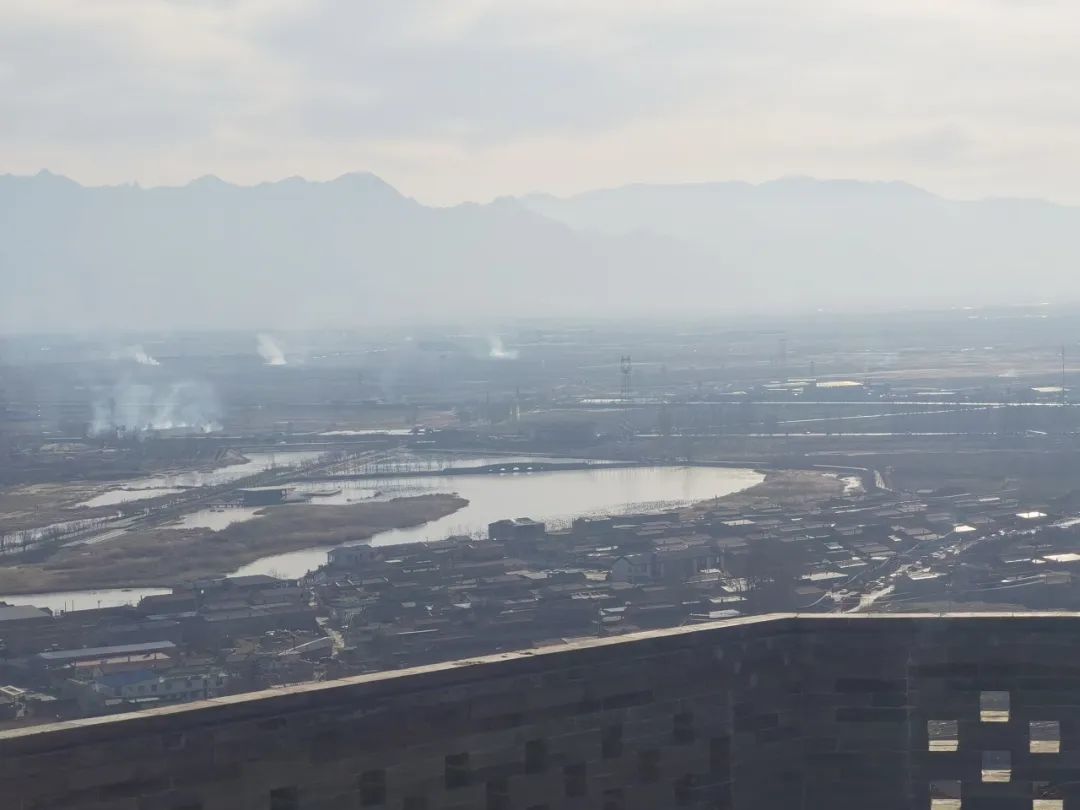
▲ The misty wetlands of Shenxi
Reviewing the lives of past sages, I often sigh. There is a saying, "Only after death can a person's character be truly judged." However, human beings are complex creatures, and such a judgment is difficult. For example, Yuan Chonghuan of the Ming Dynasty still evokes differing opinions today; some say he was a treacherous minister who brought ruin to the country, while others say he was a patriotic general who suffered unjust accusations. Only he himself truly knew the truth. I believe that a person cannot be simply labeled as good or bad. Many people who are portrayed as purely good are either exaggerated or elevated. The same applies to the evaluation of Sun Cong. In his life, he was a filial son to his family, obeying his father's orders to marry Liu Jin's sister; he was a talented scholar, whose brilliant writings have been passed down to posterity; he was an official who made mistakes, compelled by circumstances to cooperate with eunuchs in interfering with state affairs, and doing things that harmed the country; and he was a patriotic son of his hometown, who, though he experienced the passage of time and change, remained active and enthusiastic, establishing a school to benefit his hometown. His life was quite bumpy and colorful, not wasted or idle. His experiences are also a mirror for us. As his fellow townsman, I understand his difficulties and helplessness; as his later colleagues, we should also learn from him, correcting our mistakes and striving for self-improvement, cultivating virtue, advancing our careers, benefiting society, and leaving no regrets.

▲ Swans swimming in the Shenxi wetlands
June 12, 2025
Proofreader: Xuefang
Editor: Xuelin
Author's Introduction
Yang Xinru, pen name Hengshan Mountain Fool, born October 1969, from Hunyuan, Shanxi, member of the Shanxi Writers Association and the Shanxi Prose Writers Association.
Keywords:
Related News


